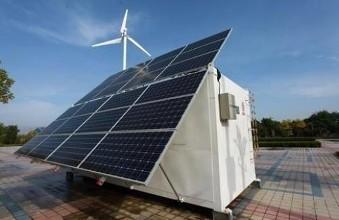
Mar . 06, 2024 14:28 Back to list
Energy Reliability with Microgrids
Energy reliability has become a critical issue in the United States due to the increasing frequency of power outages caused primarily by weather-related incidents. The power delivery system consisting of substations, transmission lines, and distribution lines is not equipped to withstand or quickly recover from damage inflicted on multiple components simultaneously. Recent examples of this vulnerability were highlighted during events like Hurricane Irene and Superstorm Sandy. Statistics show that the average duration of power outages in the U.S. is 120 minutes and climbing annually, with regions like the Midwest experiencing an average outage duration of 92 minutes per year and 214 minutes in the Northeast. In comparison, other industrialized nations have significantly lower outage durations, with countries like Japan averaging only four minutes of interrupted service per year. The growing threats of physical and cybersecurity incidents further add to the challenges faced by organizations in ensuring reliable access to power supplies for their mission-critical operations.
Historically, infrastructure improvements have been made in response to disasters to address the specific causes of power failures. However, these improvements often fail to anticipate future emergencies. It is essential to consider the potential impact of large-scale disasters such as earthquakes, nuclear explosions, or terrorist attacks, which could result in widespread suffering and disruption. Establishing safe havens or enclaves that can serve as bases for rescue and recovery operations could help mitigate the adverse human and economic impacts of unforeseen events. The ability to maintain power and provide critical services and support within isolated areas during regional outages could significantly enhance the resilience of communities in times of crisis.
When power outages occur, the consequences often extend far beyond the immediate impact zone, affecting the ability to deliver essential services such as food, sanitation, and shelter to those in need. While standby and backup diesel generators are commonly used as a source of emergency power, they come with limitations such as restricted coverage to only the buildings they are connected to, limited diesel fuel supply lasting less than 72 hours, potential delays in fuel deliveries, and inefficient fuel usage when operating at reduced loads. To address these challenges and optimize available power generation, microgrids emerge as a viable solution during sudden power outages.
Microgrids offer a more efficient and reliable alternative by isolating themselves through a utility branch circuit and coordinating multiple generators in the area rather than operating independently. They can integrate diverse energy sources such as wind and solar, gas turbines, combined heat and power plants, energy storage systems, and electric vehicles, enabling a more sustainable and flexible power supply. Microgrids are designed to sense loads and fault conditions, reroute power automatically to critical areas, and operate in a self-healing manner to maintain continuous power supply. By comprising local generation, load management, the ability to disconnect from the main grid and operate independently (island mode), and seamless coordination with the local utility, microgrids provide a comprehensive solution for ensuring energy reliability during emergencies.

Despite their potential benefits, there are key challenges associated with the implementation of microgrids, particularly pertaining to utility interconnection and microgrid controls. Utility interconnection is crucial for enabling microgrids to operate in coordination with the main grid, allowing for two-way power flow, energy exchange, and stability management between local generators and the utility grid. Microgrid control systems must effectively manage all loads and generation sources to ensure optimal power balance, prevent overloads that could disrupt voltage output or lead to system shutdowns, and coordinate the gradual integration of loads in a predefined strategy to match available generation capacity. The challenges of managing distributed generation sources with varying capacities and response behaviors require a sophisticated control strategy to maintain voltage and frequency stability and minimize disruptions within the microgrid system.
Safety considerations are paramount in the design and operation of microgrids, especially in scenarios where distributed generation sources are spread over a large geographic area. Proper coordination and supervision of all loads, generation sources, and control mechanisms are essential to prevent overloading, ensure proper voltage regulation, and maintain operational stability within the microgrid. Facilities like campuses, military bases, and wastewater treatment plants present favorable environments for the implementation of distributed microgrids due to their shared mission, centralized management structure, and existing infrastructure that can support base loads over a wide area. By leveraging central plants and distributed generators, these facilities can enhance their resilience and energy reliability while contributing to the overall vision of building a decentralized, interconnected network of microgrids at universities, hospitals, industrial parks, and neighborhoods.
Looking ahead, the vision for a resilient and robust utility infrastructure revolves around the interconnectedness of microgrids to form a cohesive and adaptable energy grid. By linking individual microgrids within universities, hospitals, and communities, a network of interconnected systems can be established that operate collectively as a single utility grid while retaining the ability to function independently during disruptions. This approach not only enhances the reliability and efficiency of the energy supply but also facilitates the integration of renewable and distributed generation sources, contributing to a more sustainable and resilient energy infrastructure for the future. In conclusion, microgrids represent a promising solution to enhance energy reliability, mitigate the impact of power outages, and build a more resilient and sustainable energy ecosystem in the face of evolving challenges and uncertainties.
-
Stackable Battery System: Revolutionizing C&I Energy Storage with Suzhou ACDC
NewsJul.21,2025
-
Revolutionizing EV Charging with Suzhou DC Quick Charging Stations Solutions
NewsJul.21,2025
-
Revolutionize Your Power Needs with Suzhou ACDC's Portable Power Station Solutions
NewsJul.21,2025
-
Outdoor Integrated Temperature Control Cabinet: Elevating Energy Storage Cabinet Efficiency
NewsJul.21,2025
-
Container Type Energy Storage System: Revolutionizing Energy Storage with Stackable Battery Solutions
NewsJul.21,2025
-
Advanced Self-Cooling Energy Storage Cabinet Solutions
NewsJul.21,2025























